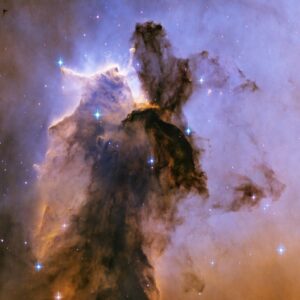The Demographics and Research Interests of the UK Astronomy and Geophysics Communities 2023
The study followed the same methodology as that carried out in 2010 and 2016. Questionnaires were distributed to university departments and research establishments to collect data about the staff and research students engaged in astronomy, solar system science, and solid Earth geophysics research. 19 university departments/research groups returned the questionnaire. Data for a further 62 university departments/research groups were taken from their websites. None of the research establishments contacted returned the questionnaire. Staff data for six research establishments were collected from their website but a further two research establishment websites did not have staff information. The number of questionnaire returns was lower than the 40 in 2016.
A second questionnaire, designed to collect detailed information about how individuals spend their time and what their research interests are, as well as demographic information, was made available to departments and research establishments as a link to the survey website. The link was also publicised by the Royal Astronomical Society.
Community Size and Composition
- Astronomy remains the most populous research area in universities with 1,420 staff, followed by solid Earth geophysics (591) and solar system science (442).
- The number of university researchers has grown steadily, with astronomy and solar system science researchers increasing from 524 in 2010 to 735 in 2023.
- Technical staff numbers in universities rose from 140 (2010) to 208 (2016) but declined to 176 in 2023.
Diversity and Demographics
- Women’s representation in academic positions has generally increased or remained stable, though lecturer-level representation in solid Earth geophysics has dropped from 32% (2010) to 19% (2023).
- The proportion of women in astronomy and planetary sciences is higher than in physics and exceeds expectations based on A-level physics enrollment.
- Among permanent staff, 74% are British, 15% are from the EU, and 5% from other countries; 88% identified as White (97% of British staff).
- 93% of permanent staff reported being heterosexual, 3% gay or lesbian, and 3% bisexual, aligning broadly with national statistics.
- 72% of staff stated they had no religion, a much higher proportion than the general UK population (37.8%).
PhD and Postdoctoral Researchers
- The number of PhD students was 1,161 in astronomy, 341 in solar system science, and 417 in solid Earth geophysics.
- 31% of UK-domiciled PhD students are women, compared to 43% among non-UK students.
- Ethnic minority students are underrepresented among UK PhD students, with 92% identifying as White (compared to 79% of UK 20–29-year-olds in the 2021 census).
- 81% of postdoctoral researchers’ time is spent on research, similar to previous years.
- 53% of postdocs are British, with a decline in EU nationals (21% in 2023 vs. 33% in 2016), likely due to Brexit.
Work Patterns and Research Activity
- Academic staff spend 26–36% of their time on research, with a notable decline since 2016, particularly among senior staff.
- 79% of fixed-term researchers in astronomy and geophysics move to academic or research institute roles after leaving, with 19% transitioning to industry.
- The most common research areas in astronomy include galaxies (17%), stars (14%), and cosmology (10%).
- The European Southern Observatory (ESO), Hubble Space Telescope, ALMA, and James Webb Space Telescope are among the most frequently used facilities.
- Research focus over 25 years has shifted, with a decline in X-ray studies (20% to 9%) and a rise in optical wavelength research (33% to 41%).




